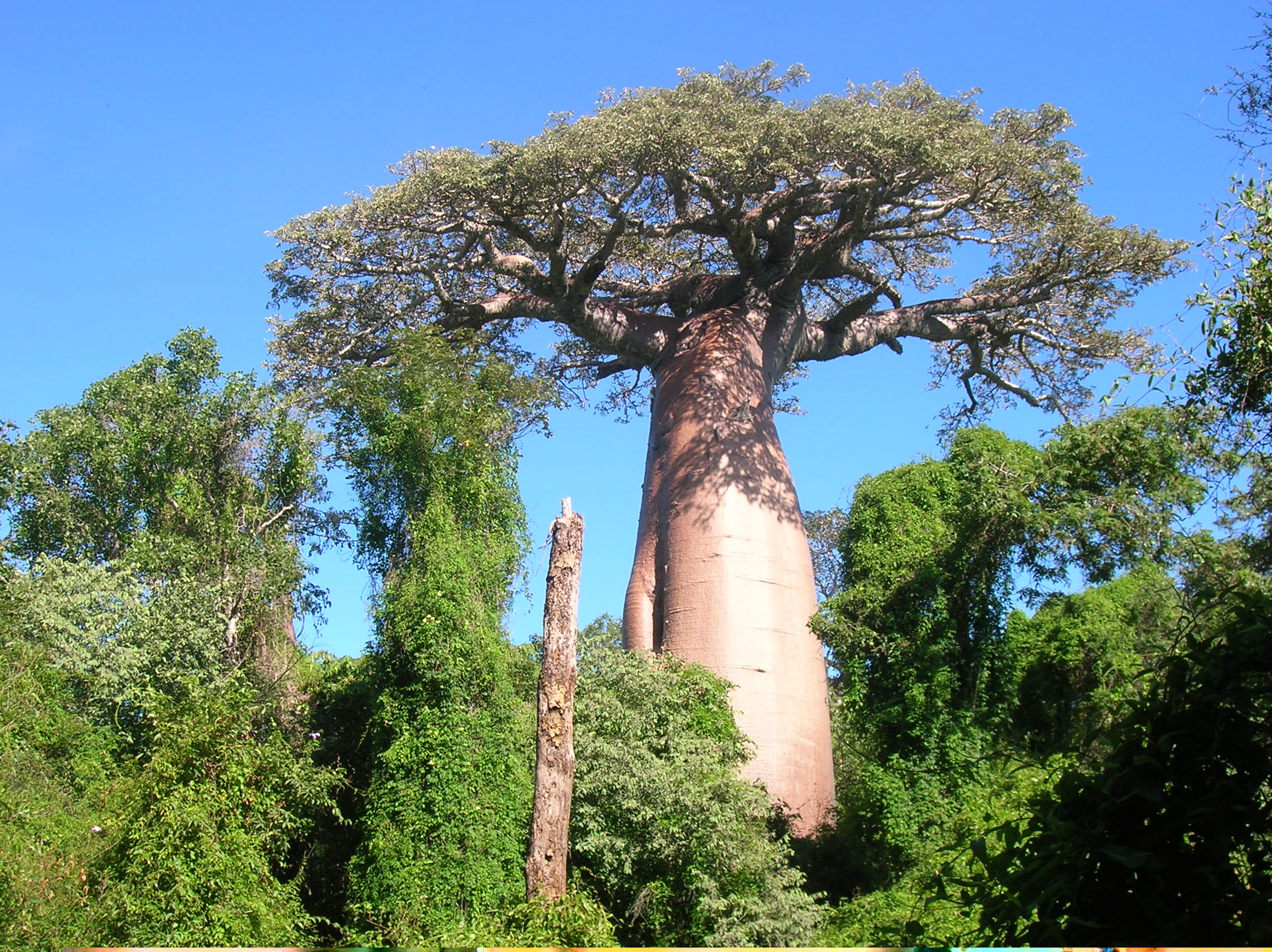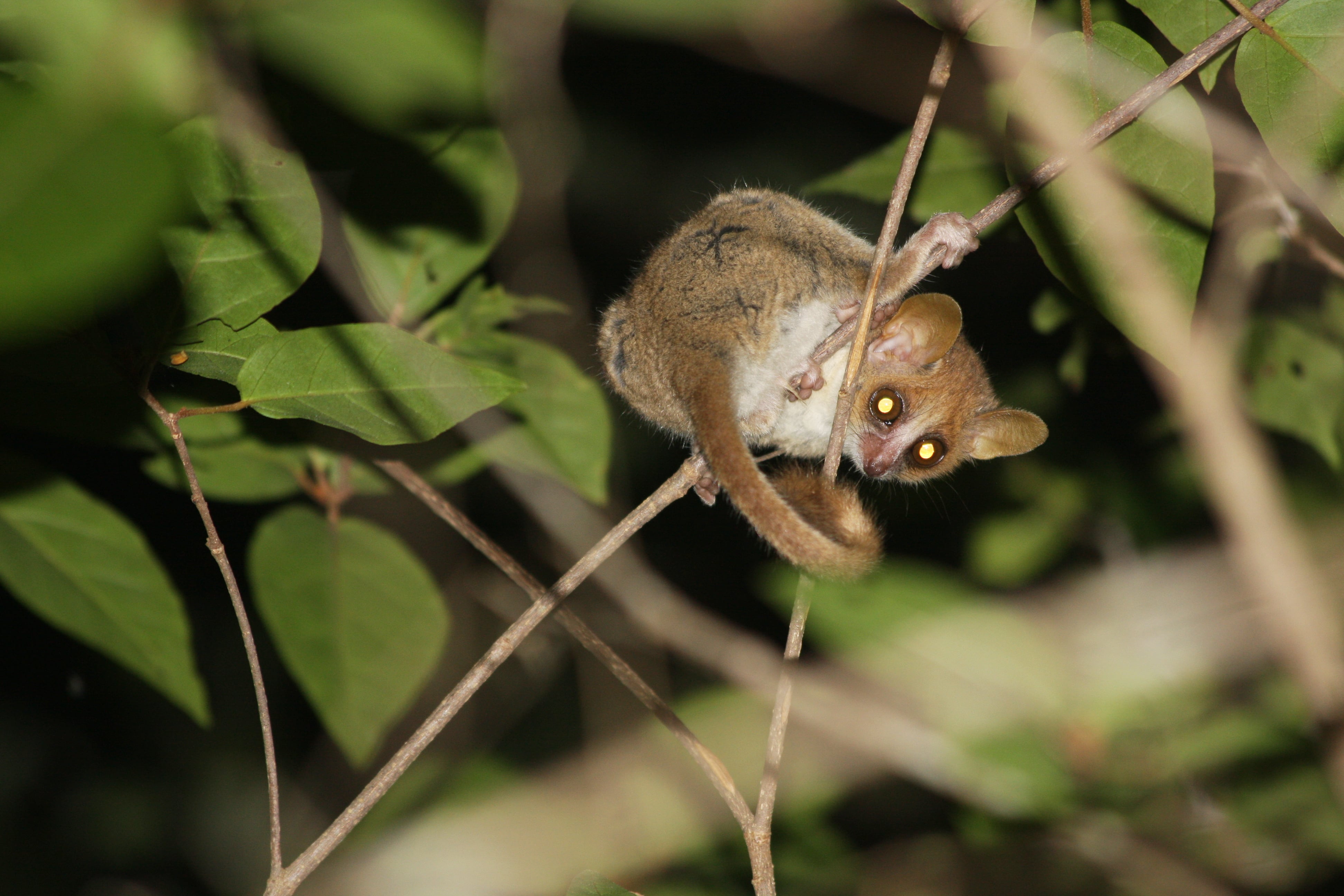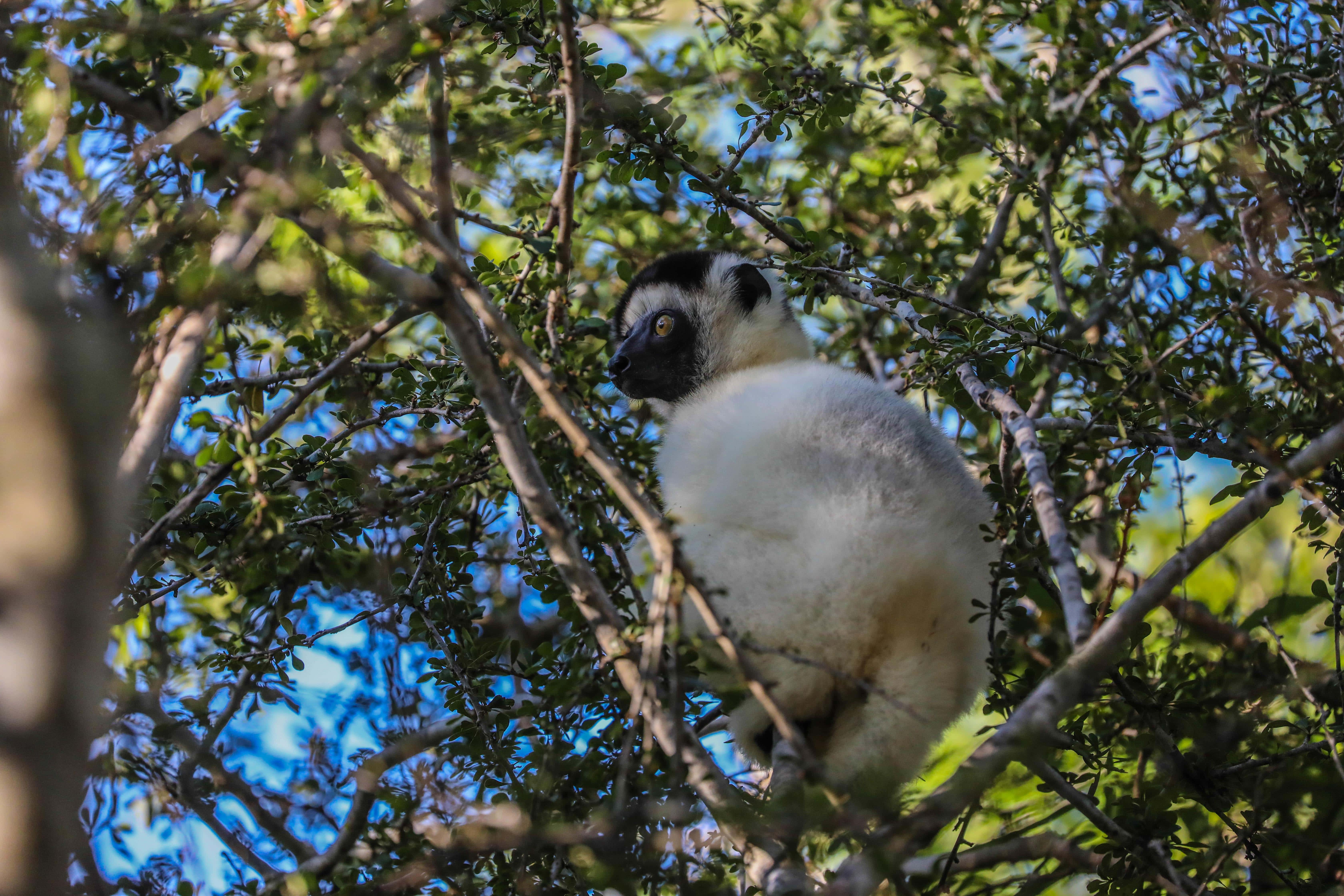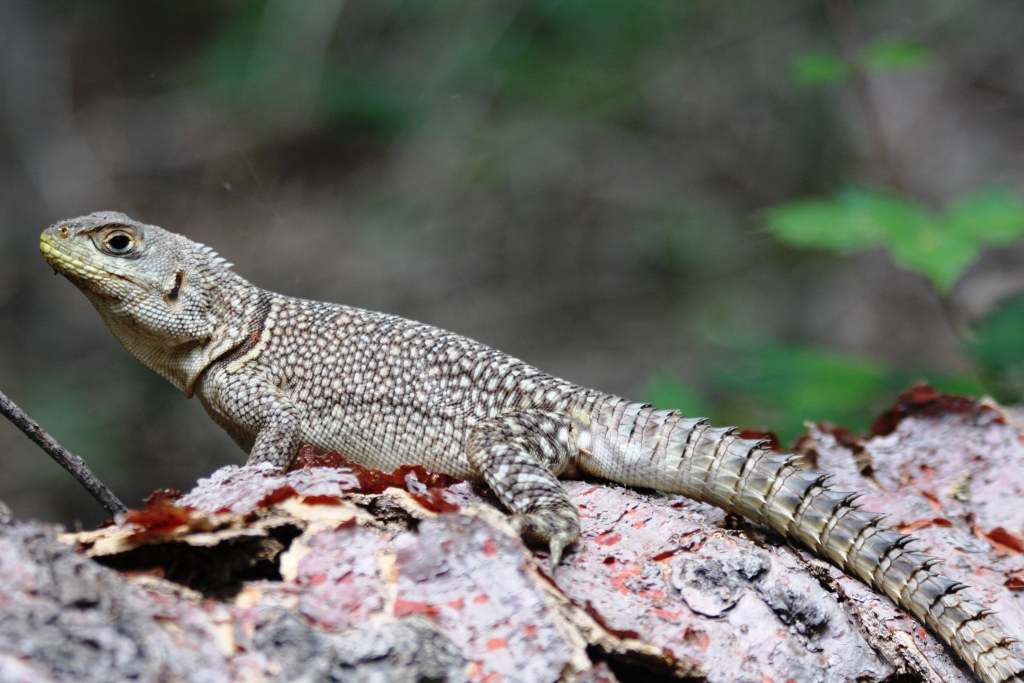
Andranomena
- Accueil
- Special Reserve
- Andranomena
“Welcome to one of Madagascar’s last wild sanctuaries: the Andranomena Special Reserve, where the dry forest defies the dust of Menabe and life reinvents itself with every sunrise.”
Nestled in the heart of the Menabe region, Andranomena covers 6,420 hectares of dense dry forests, giant baobab trees, and golden savannas, providing the ultimate refuge for a unique biodiversity found nowhere else in the world.
This natural mosaic protects one of the core areas of Madagascar’s western landscape: a continuous forest massif that is home to the last remaining representatives of species that have become legendary, from turtles to lemurs, from miniature microcebus to the majestic Grandidier’s baobabs.
The dry season shapes life here, in a constant struggle against fire, deforestation, and pressure from surrounding villages. Despite everything, Andranomena remains a bastion of resilience and a living laboratory for the conservation of the natural heritage of the West.
The Reserve protects many strictly endemic and endangered species: the famous Kapidolo turtle (Pyxis planicauda), Verreaux’s sifaka, the world’s smallest lemur (Microcebus berthae), as well as giants of the flora such as Hazomalania voyroni and the iconic baobab trees.
Key figures :
🗺️ Andranomena covers 8,170.8 hectares within the Menabe region.
🌳 80% of the local biodiversity is endemic: 113 woody species have been recorded, including three iconic baobab species (Grandidier, rubrostipa, zà) and Hazomalania voyroni.
🐒 Seven species of lemurs, including two diurnal (Propithecus verreauxi, Eulemur fulvus rufus) and five nocturnal (Microcebus berthae, Lepilemur ruficaudatus, Microcebus murinus, Phaner furcifer, Mirza coquereli).
🐢 Remarkable local endemics: Hypogeomys antimena (Vositse), Pyxis planicauda (Kapidolo), Microcebus berthae (Tilitilivahy).
🌿 Threatened species: Hazomalania voyroni (CR), Propithecus verreauxi (CR), Pyxis planicauda (CR), numerous baobabs and endangered or vulnerable woody species.
📅 The Andranomena Special Reserve has existed since 1958.
🚗 Access to the Reserve is possible all year round via the RN 45 Morondava–Belo/Tsiribihina road, by bush taxi or rental car.

Landscapes / Habitats
🌄 Hills, plateaus, valleys, dry forests
🌳 Dense dry deciduous forest (continuous forest massif)
🌾 Natural savannas, shrublands, swamps
💧 Several streams and wetlands on the outskirts
🪨 Red sandy soils, rocky outcrops

Fauna
🐒 7 species of lemurs: Propithecus verreauxi (sifaka), Eulemur fulvus rufus, Microcebus berthae, Lepilemur ruficaudatus, Microcebus murinus, Phaner furcifer, Mirza coquereli
🐢 Kapidolo tortoise (Pyxis planicauda), Hypogeomys antimena (Vositse)
🦎 Various reptiles, including snakes and lizards
🦜 Western forest birds
🦇 Bats, tenrecs, rodents

Flora
🌳 113 woody species inventoried, 3 species of baobabs (Adansonia grandidieri, A. rubrostipa, A. za)
🌿 Hazomalania voyronii (CR), precious wood, Euphorbia, xerophytic shrubs
🌾 Grasslands, secondary grasslands
🍀 80% plant endemism
Although classified as a site of scientific interest due to its exceptional endemism, the Andranomena Special Reserve faces constant threats.
- Bush fires and land clearing:
Despite efforts to combat them, vegetation fires continue to ravage the dry forest. Each fire destroys unique habitats, including those of the iconic Vositse and the legendary baobab tree.
- Selective logging & poaching:
Illegal harvesting of precious wood and hunting endanger the most vulnerable species such as Pyxis planicauda and Propithecus verreauxi.
Increasing land pressure
Informal human presence
“Dry forest, unique life”
Preserving the exceptional, restoring the future
Biodiversity Conservation
CLP and AGP patrols crisscross the reserve. In 2024:
25 km of firebreaks maintained
Active firefighting
Enhanced ecological monitoring of baobabs, lemurs, and iconic species
💪 Here, the flames are receding, and life is taking root again.
Success story
Natural regeneration observed on plots restored with Graine de Vie since 2025.
Co-management, development and safeguarding
Co-management is underway, even if challenges remain.
In 2024:
Community forest restoration in partnership with Fanamby
Sustainable development microprojects identified for 2025
Ongoing awareness-raising around Vositse and fire
Success story
A village committee forms a firefighting brigade – an initiative supported by local women.
Financial sustainability and partnership
The ecotourism potential is real, although currently on hold:
Unique baobab forest
Rich nocturnal wildlife
Possible activities: hiking, wildlife watching, camping
Active scientific partnerships with Durrell and DPZ.
Governance and management
In 2024:
Comprehensive ecological monitoring of flagship species
Active firefighting camp
Implementation of the Baobabs project with HEMPEL and FANAMBY
Success story
Stronger collaboration with Durrell researchers to monitor Propithecus verreauxi.
Awareness and accountability
In 2024:
Transparency on the use of funds (FAPBM, HEMPEL)
Ongoing dialogue with partners
Preparation for the revival of ecotourism
Success story
First report shared with communities in 2024 – a turning point towards inclusive governance.
Recent key figures
🛡️ Threat level: Medium
🔥 Forest loss: 1.04 ha between January and October 2024
🦧 7 species of lemurs recorded
🌱 +25 km of firebreaks
💰 $90.4 million in economic benefits for local residents
🔍 Comprehensive monitoring of ecological targets
🌳 Community restoration relaunched with Graine de Vie
🌱 Current projects & outlook for 2025
Extension of firewalls, monitoring of Pyxis planicauda
Micro-projects to support development have been identified and will be implemented progressively according to feasibility, starting in 2025.
Reopening planned, routes to be updated
Consolidation of the Baobabs project (HEMPEL/FANAMBY/DURRELL)
Enhanced coordination with the DREDD and local authorities

A private foundation under Malagasy law, created in 2005 as an innovative mechanism for financing protected areas in Madagascar. Its mission is to contribute to the sustainable financing of Madagascar's System of Protected Areas (SAPM), the conservation of biodiversity, the maintenance of ecosystem services, the well-being of the population, the fight against climate change and the promotion of good management within the SAPM.

Corporate foundation, based in Denmark, the sole shareholder of the Hempel Group - world leader in the distribution of coatings for industrial structures - and a philanthropist committed to education, sustainable coatings technology, preserving biodiversity and implementing important projects to bring about positive change.

Association founded in 2009, with the vision of bringing back the green island aspect to the big island of Madagascar through forest restoration.
On the plan
VISIT US
Depending on your means of transport :
- Ground Transportation
🚗 Direct access via the RN45
Take the RN45 from Morondava towards Belo/Tsiribihina.
- Maritime transport
🛳️ No maritime access
- Air transport
✈️ No flight connection
🗓️ When to visit Andranomena ?
🚶♂️ The Special Reserve is open all year round!
Madagascar National Parks
Immerse yourself in the unique biodiversity of our national parks and discover our commitment to conservation and ecosystem protection. Marvel at unspoilt landscapes and exceptional wildlife. Together, we create a model of responsible and beneficial coexistence

